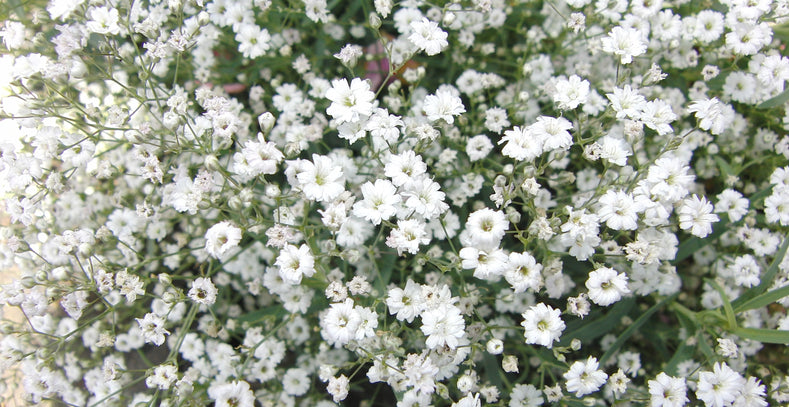Planting Gypsophila, commonly known as Baby's Breath, brings a delicate and airy touch to gardens and floral arrangements with its cloud-like clusters of tiny white flowers. Here's a comprehensive guide to planting and caring for this enchanting plant:
Choosing the Right Time and Location
- Best Time to Plant: Plant Gypsophila in spring after the danger of frost has passed, allowing the plant to establish before the hot summer.
- Location: Choose a spot in your garden that receives full sun. Gypsophila thrives in bright, direct light for most of the day.
Preparing the Soil
- Soil Requirements: Baby's Breath prefers well-draining, alkaline soil. It performs well in sandy or rocky soils.
- Soil Preparation: If necessary, amend the soil with compost to improve drainage. Consider adding lime if your soil is acidic to raise the pH level.
Planting Gypsophila
- Spacing: Space plants or seeds about 12-18 inches apart to give them room to spread.
- Planting Depth: Dig a hole slightly larger than the rootball. Place the plant in the soil so that the rootball is slightly below the surface.
Watering and Feeding
- Watering: Water thoroughly after planting. Once established, Gypsophila is quite drought-tolerant but will benefit from occasional watering during prolonged dry spells.
- Fertilizing: Apply a balanced, slow-release fertilizer at the beginning of the growing season to support healthy growth.
Ongoing Care
- Mulching: Apply a thin layer of mulch to retain moisture and suppress weeds without suffocating the plant.
- Pruning and Deadheading: Deadhead spent flowers to encourage continued blooming. After the first flush of flowers, you can lightly prune the plant to promote bushier growth and a second bloom.
Pests and Diseases
- Common Issues: Keep an eye out for common pests such as aphids. Gypsophila is relatively disease-resistant but can suffer from root rot in poorly draining soils.
Winter Care
- In Cold Climates: In areas with harsh winters, mulch around the base of the plant to protect the roots from freezing temperatures.
By following these steps, you'll enjoy the ethereal beauty of Gypsophila in your garden. Whether used as a filler in mixed borders, a standalone feature, or as part of a rock garden, Baby's Breath's frothy blooms add a touch of elegance and whimsy from early summer into fall.

